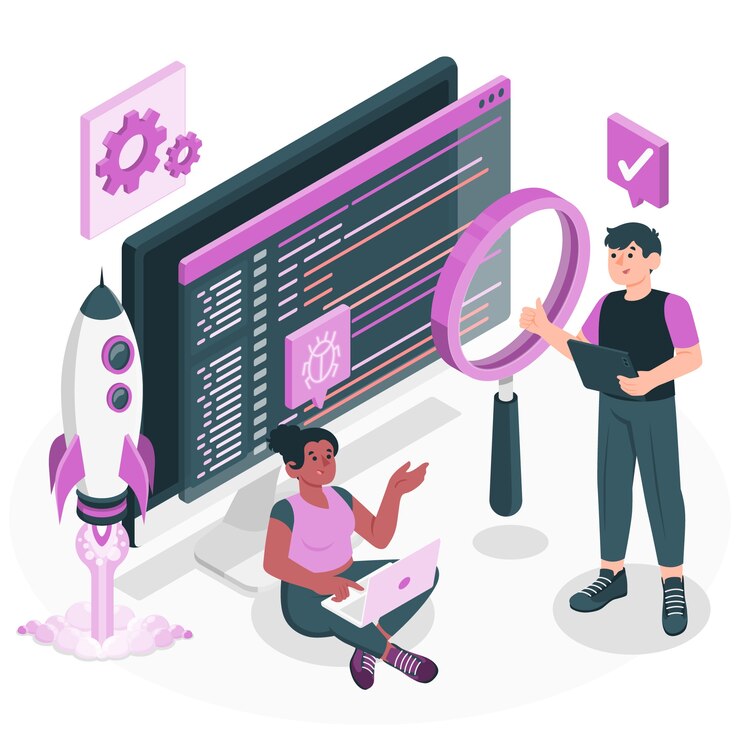
MSME
Registered

Wedline
Registered

We Deliver
Clutch

28+ Reviews

250+ Projects
Completed

125+ Happy
Clients

MSME
Registered

Wedline
Registered

We Deliver
Clutch

28+ Reviews

250+ Projects
Completed

125+ Happy
Clients

wordpress development services offer a powerful platform for creating blogs and websites without the need for coding knowledge. In this guide, we'll walk you through the process of starting your own WordPress blog, step by step.
When you hire WordPress dedicated developers, you gain access to a wide range of customizable themes, plugins, and features that make WordPress the preferred choice for bloggers worldwide. Whether you're a beginner or an experienced user, WordPress provides the flexibility and scalability you need to build a successful blog.
Before you can launch your WordPress blog, you'll need to select a hosting provider that meets your needs and budget. Look for hosting providers that offer reliable performance, excellent customer support, and one-click WordPress installation.
Once you've chosen a hosting provider, installing WordPress is easy. Most hosting companies offer one-click installation, allowing you to set up your blog in minutes. Follow the on-screen instructions to complete the installation process.
One of the advantages of WordPress is the ability to customize your blog's appearance with themes. Explore the thousands of free and premium themes available in the WordPress theme directory or consider wordpress development services for custom theme development tailored to your unique style and branding.
Plugins extend the functionality of your WordPress blog, allowing you to add features such as contact forms, social media integration, and search engine optimization. Install essential plugins like Yoast SEO, Contact Form 7, and Jetpack to enhance your blog's performance and user experience.
Before you start writing, take the time to identify your target audience and understand their needs, interests, and preferences. Tailor your content to address their pain points and provide valuable solutions that keep them coming back for more.
When crafting your blog posts, focus on creating engaging, informative content that resonates with your audience. Use clear, concise language, break up text with headings and bullet points, and incorporate multimedia elements like images and videos to enhance readability.
Search engine optimization (SEO) is essential for improving your blog's visibility in search engine results pages (SERPs). Learn the basics of SEO, including keyword research, on-page optimization, and link building strategies, to attract organic traffic to your WordPress blog.
Optimize your blog posts for search engines by incorporating relevant keywords into your content, optimizing meta tags and descriptions, and creating high-quality, shareable content. Leverage plugins like Yoast SEO to analyze and improve your on-page SEO efforts.
Building a community around your WordPress blog is key to its success. Encourage user interaction by responding to comments, asking questions, and soliciting feedback from your audience. Create a welcoming environment where readers feel valued and engaged.
Once you've published your blog posts, it's time to promote them to reach a wider audience. Share your content on social media, participate in online communities and forums, and collaborate with other bloggers to increase visibility and drive traffic to your WordPress blog.
There are several ways to monetize your WordPress blog, including displaying ads, promoting affiliate products, selling digital products or services, and offering sponsored content. Consider your audience and niche when choosing the best monetization strategy for your blog.
Once you've decided on a monetization strategy, set up the necessary revenue streams on your WordPress blog. Install ad management plugins, sign up for affiliate programs, and create sales pages for your products or services to start generating income from your blog.
As your WordPress blog grows, it's essential to keep your content organized and easy to navigate. Use categories and tags to organize your posts into relevant topics and make it easier for visitors to find the information they're looking for.
Stay consistent with your blogging schedule by creating a content calendar outlining upcoming topics, publishing dates, and promotional strategies. A content calendar helps you stay organized and ensures you're consistently delivering valuable content to your audience.
Engage with your audience by responding to comments on your blog posts. Acknowledge and appreciate feedback, answer questions, and foster meaningful conversations with your readers. Building relationships with your audience strengthens loyalty and encourages repeat visits to your WordPress blog.
Host live Q&A sessions or webinars to interact with your audience in real-time and provide them with valuable insights and information. Use tools like Zoom or Facebook Live to host virtual events and engage with your audience on topics relevant to your WordPress blog.
Monitor key metrics like website traffic, page views, bounce rate, and conversion rate to measure the success of your WordPress blog. Use tools like Google Analytics to track and analyze data, identify trends, and make informed decisions to optimize your blog performance.
Set specific, measurable goals and key performance indicators (KPIs) for your WordPress blog to track progress and success over time. Whether it's increasing traffic, growing your email list, or generating revenue, setting clear goals helps you stay focused and motivated to achieve your objectives.
Diversify your content strategy by exploring additional content formats such as podcasts, videos, infographics, and downloadable resources. Experiment with different formats to keep your audience engaged and attract new visitors to your WordPress blog.
Invite guest bloggers or industry experts to contribute guest posts to your WordPress blog. Guest blogging not only adds fresh perspectives and expertise to your content but also expands your reach by tapping into the guest bloggers' audiences.
Ensure your WordPress blog is accessible to all users, including those with disabilities, by following accessibility best practices. Use descriptive alt text for images, provide keyboard navigation options, and choose accessible themes and plugins to create an inclusive user experience.
Conduct regular accessibility audits and testing to identify and address any barriers that may prevent users from accessing your WordPress blog content. Collaborate with accessibility experts or use automated tools to evaluate your site's accessibility and implement necessary improvements.
We serve globally